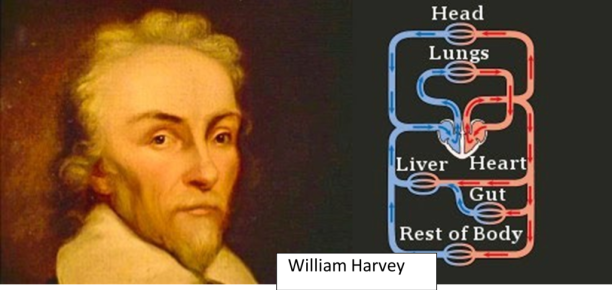Historians have often disagreed as to what brought about the dark ages in the first place and then the “re-birth” of the arts, science, medicine, and the intense thirst for knowledge. A variety of factors played a role, the influence of the Byzantine Empire through the Crusades, the brushes with the Islamic culture over the Pyrenees in the Iberian Peninsula with trade, war, and study of Medieval scholars in the higher learning centers of Al- Andalus, and the revitalization of art, especially south of the Alps in Florence, Italy. Gradually the knowledge of the past percolated back into Central Europe.

Leonardo da Vinci is perhaps the one single person who most embodies the Renaissance. He was a painter, a sculptor, a prolific inventor, a geographer, and an engineer, but what interested him most was the anatomy of the human body. He did very meticulous dissections, with detailed drawings, and knew anatomy better than most physicians of his day. His detailed drawings and writings which influenced the next generation, such as Ambroise Paré, and Andreas Vesalius. One of the meticulous observations seen above has the most accurate depictions of the upper extremity ever rendered.

But it was not until the 16th Century that the darkness truly started to lift in medicine and surgery.
Ambroise Paré, a French barber surgeon, learned that ligating vessels was better than pouring boiling oil into wounds to stop the bleeding. Ambroise devised rapid techniques amputating a limb that was injured on the battlefield. He also learned that injuries treated with a bandage soaked in turpentine was enormously superior to cauterization. He also devised prosthetic limbs, provided you survived the amputation.
Ambroise Paré also dabbled in obstetrics and came up with some maneuvers to make difficult deliveries survivable. He invented the internal podalic version, and manual extraction of the fetus when in a breech position. His collected works and experiences, Les Oeuvres, were published in 1585 and raised the status of the barber- surgeons throughout Europe. He utilized the anatomic discoveries of Andreas Vesalius, which challenged Galen’s drawings of monkey anatomy that had been the standard for over 1000 years.
Vesalius was the game changer with his book, De Humani Corporis Fabrica. This book was illustrated by a student of the famed painter, Titian, who often used allegorical poses of the dissected corpses to symbolize some moral or spiritual meaning. Vesalius was a firm believer that to understand the anatomy, the student had to do the dissection personally.
The old method of having servants do the dissection, and observing what was done, was inferior to doing the dissection by yourself. Vesalius encouraged his students to get their hands dirty. Vesalius experienced some unpleasant brushes with the Inquisition, as some of his discoveries conflicted with scripture, such as the fact that women had the same number of ribs as men.
It remains a mystery why with all the smart people going back to the ancient Greeks like Aristotle with his astute observations of nature, Aristarchus who deduced that the earth revolved around the sun, and Posidonius who calculated earth’s circumference to an accuracy within a few hundred miles. Archemedes even created an analog computer, the Antikithera mechanism. Then, Da Vinci came up with so many brilliant conclusions on subjects that ranged from human anatomy to why ancient extinct skeletal remains are found on mountain peaks. Why has science made so little progress? The dark ages still had a stranglehold with influence for quite some time after they officially ended. Perhaps that is why we advanced so haltingly in the healing arts and all of science.

Vesalius gave lectures at the University of Bologna and University Padua, where one of his eminent contemporaries, Fallopius, was the first to describe the structures that still bear his name, the Fallopian tubes that conduct the egg from the ovaries to the uterus. Fallopius also offered a few helpful suggestions, and even some corrections to Fabrica, which Vesalius graciously accepted and incorporated.
Vesalius was punished for his advanced thinking and discoveries and was strongly encouraged to make a penance trip to the Holy Land. He shipwrecked on one of the many Greek islands where he died, a loss that set back the newfound anatomic knowledge.
The English doctor, William Harvey, also trekked to Italy and entered the University of Padua in 1599. In England, it was still not acceptable to dissect human corpses. In 1628 he published his most well-known work, which explained how the human heart works, De Motu Cordis, and corrected the mistakes of Galen which had stood unchallenged for millennia.

Through a simple experiment, he showed that venous blood flows to the heart, while arterial blood is always pumped away from the heart, as is evident when an artery is transected.

